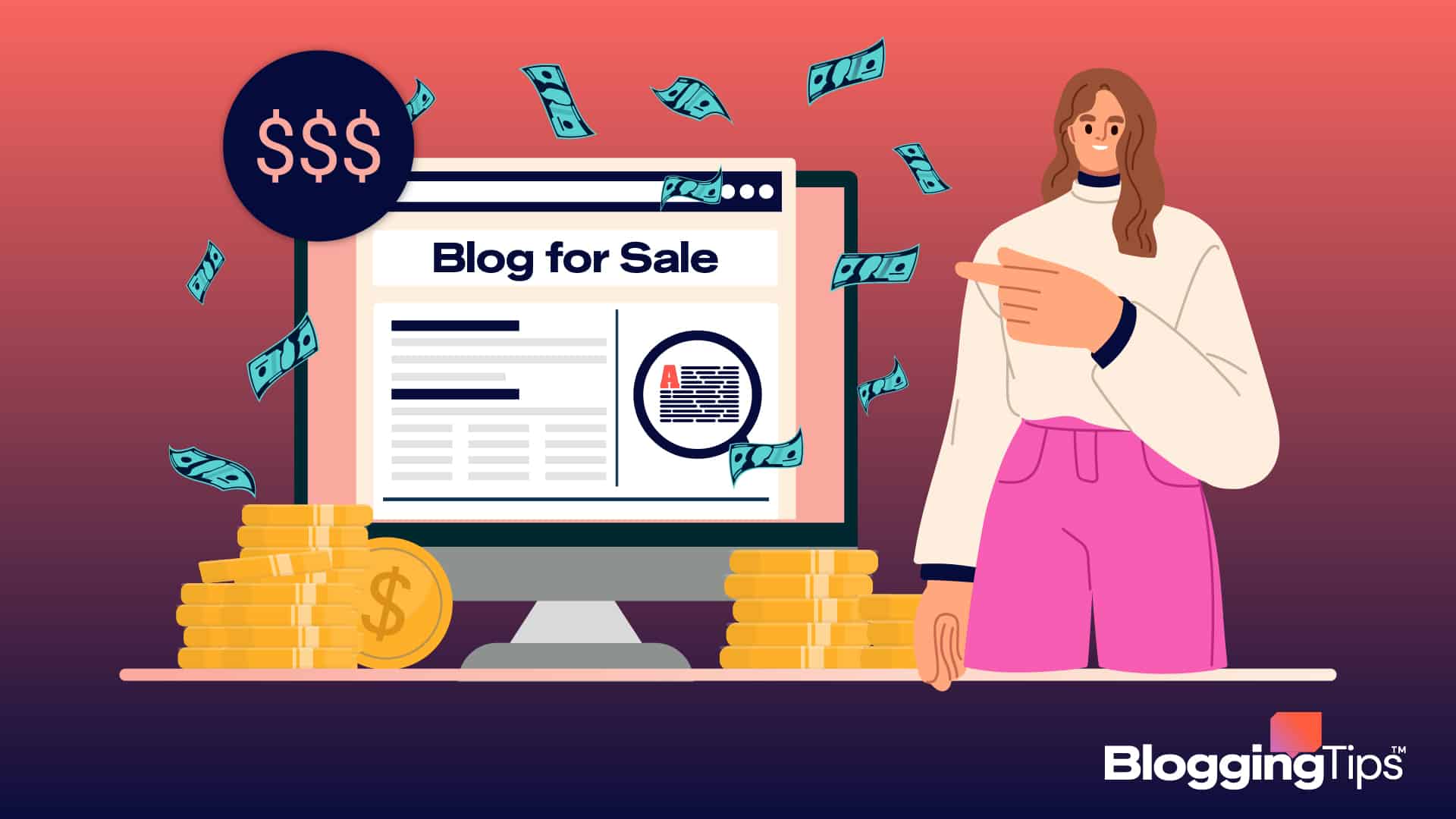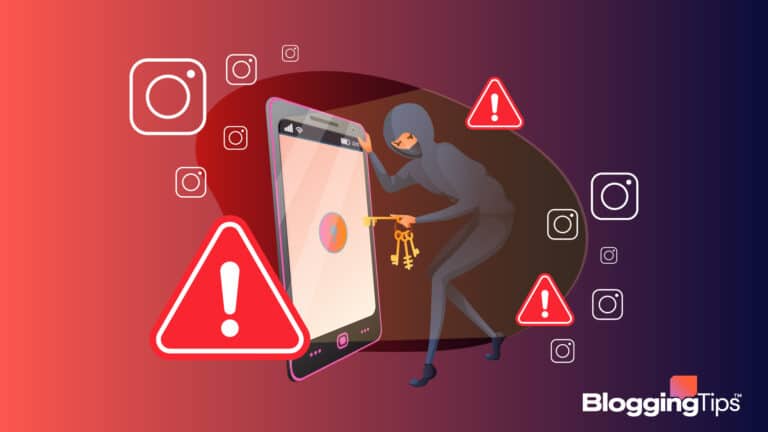There was a time when selling a blog was a tricky affair. Not only was it difficult to find buyers, but also it was difficult and tricky to avoid fraud.
However, as the world wide web evolved, it became easier and easier to sell a blog or a website.
Today there are dedicated marketplaces available to buy and sell the blogs or websites that we build. However, selling a blog still requires doing certain things in a particular manner.
Without knowing any selling-related tips and advice for blogging, you may complicate things for yourself that may delay the sale.
What are those things? Well, that’s precisely what we’ll explore in this article. Let’s begin!
Can a Blog Be Sold?
The answer is both Yes and No. If you build a blog in a niche with competition and demand, and more importantly, if your blog has some traffic, you can definitely sell your blog.
On the other hand, if you start your blog in a niche where there’s little-to-no demand and competition, and your blog is also not generating any decent revenue, then the chances of being able to sell it will be as good as none.
There are many reasons why someone decides to sell their blog, but the root cause behind them is either to make money or to free up some time to start something else.
How Much Can You Sell a Blog For?
The answer varies depending on the quality of your content, the traffic you’re receiving, and the revenue you are generating.
There’s no single number that can be attributed to all blogs, and depending on the factors mentioned here, you can sell your blog for 1x to 4x of your revenue.
How Do You Start a Blog to Sell?
Starting a blog as a side hustle and starting one to sell it are two different things that require different approaches. If you plan to sell your blog at some point in the future, your blog should have a business plan that makes it sellable.
Here are some elements of that plan which you should keep in mind while building a blog to sell:
#1. Focus On A Profitable Niche
First of all, build your blog in a profitable niche.
What is a profitable niche? Well, it’s a niche in which you can easily find advertisers for your blog.
How to check if there are advertisers available for your niche or not?
Don’t worry; it’s not a tricky affair. Just a Google search would be enough to find that.
If you see multiple brands advertising for the keywords related to your niche, then it’s a profitable niche. You can also get an idea of how popular blog topics are in that niche by looking at the search volume.
You can easily discover this by searching for keywords related to your niche and looking on the search results page to see if there are Google Adwords ads on the page.
If you find ads running for almost all keywords related to your niche, then it’s a profitable niche.
#2. Choose A Niche That’s Easily Outsourced
The second thing to keep in mind about your niche is to choose one in which you can easily outsource content creation, marketing, graphic design, and other tasks.
Building a blog requires a lot of effort, and if you can’t outsource those tasks, then you’ll face a lot of difficulties in growing your blog.
So choose a niche for which content creators and other professionals are easily available to assist.
#3. Keep Track of Your Finances
It’s easy to invest a ton of money in your blog and regret it later. Blogging is another form of business, and any business can eat lots of money but still fail to grow if the expenditure isn’t accounted for and ROI isn’t calculated regularly.
In addition to that, keeping track of the ROI will also help you arrive at a valuation for your blog, as you’ll know how much you have invested in making the blog into what it is at the time of selling.
#4. Grow Your Audience
Focus on SEO, social media marketing, and other marketing methods to grow your audience. If you don’t know anything about SEO, follow some blogs about search engine optimization to learn the basics at least and then hire an SEO professional.
Also, build your email list of subscribers to support your blog. It will come in handy to increase the number of returning visitors to your blog, ultimately helping your blog to get noticed.
As your audience grows, you’ll find it increasingly easier to bring more and more traffic, thus getting closer and closer to the day when you can sell your blog and reap the rewards of your hard work.
#5. Have Multiple Income Streams
Gone are the days when ads used to be the only method for monetizing a blog. Today there are multiple income streams available to earn money from your blog, including but not limited to affiliate marketing, sponsored articles, selling subscription-based content, etc.
You’ll make much more money by using multiple monetization methods on your blog in addition to ads, which can be reinvested into the blog to generate more content or to grow your audience faster by increasing the marketing budget.
#6. Make Consistent Profits
Finally, make consistent profits on your blog and keep documented proofs of all expenses and revenue generated throughout the existence of your blog.
These documents will help you negotiate the valuation of your blog when you’re in the market to sell it. Buyers like buying websites that have been generating revenue constantly instead of websites that have been burning money.
So maintain financial discipline while focusing on the growth of your audience and blog.
How to Sell a Blog
Once you have reached a point where your blog has enough content and profits, you can go to the market to sell it. Here’s how to go about that:
#1. Gather Data and Information
First of all, collect all data regarding your blog and the other blogs in your niche. Here are a few things that must be included in your data points:
- Daily unique visitors to your blog
- Total daily visitors to your blog
- Pageviews per visitor
- Bounce rate
- Revenue per month
- Profit per month.
But these are all data points related to your website. You also need to collect some data regarding the niche in which your blog exists.
Simply put, you need to find out how much do other blogs belonging to your niche and receiving as much traffic as your blog get sold for.
You can find it out by visiting the marketplaces where blogs and websites are sold.
#2. Determine Your Blog’s Value
Based on the data you collected in the last step, arrive at a fair value for your blog. Ideally, this should be a range based on your profit and peer comparison.
As a general rule of thumb, you can charge between 2x-3x of profit multiple if other blogs in your niche charge that much.
But profit multiple alone should not be the basis of your blog’s valuation.
The amount of content and unique features of your blog can also play a role in that, as many blogs which do not have any traffic get sold only on the basis of selling or buying blog posts.
You can also compare with other blogs in your niche and then charge more or less depending on how much profit multiple they are charging. If they’re charging more, then you can charge a higher figure of profit multiple for your blog’s value.
If they’re charging less, on the other hand, then you may have to charge less or find out the reason behind why they get paid less to figure out how you can get paid more than them for your blog.
#3. Sell it On A Marketplace
After building your blog and calculating the value of your blog, you can list it on a marketplace to sell it.
There are several marketplaces available to sell websites and blogs, and some of them are listed below in the other section of this article.
Once you register on them, you can list your blog for sale along with relevant details and data to support the claims of your profit and traffic.
#4. Agree On A Selling Price
Once you list your blog on a marketplace, you’ll receive inquiries from buyers depending on how lucrative your deal is.
Respond to them, negotiate the terms, and agree on a selling price with whoever is giving you a good deal.
Sometimes you may not even have to negotiate if you get offers of paying as much as you asked for.
#5. Create A Sales Contract
Finally, after agreeing on a selling price, you should prepare a sales contract to close the deal. If you’re selling on a marketplace, the marketplace itself can help you prepare this document.
Many marketplaces also ask the buyer to sign a Letter of Intent (LOI) in addition to the sales contract. You get the signed copies of both documents after you accept an offer.
#6. Flip Blogs
Finally, your buyer makes payment to the marketplace where you’re going to close the deal, and the marketplace puts that payment into Escrow.
You start sharing all the assets and data related to blog ownership and control with your buyer, and once the transfer of assets and data is complete, the marketplace releases your payment from escrow.
Where to Buy and Sell Blogs
We’ve explored everything related to making a blog for selling and how to complete the sale. Throughout the process, we talked several times regarding marketplaces where one can buy or sell blogs. Now it’s time to take a look at some of those marketplaces.
Here are the 3 most popular ones:
#1. Flippa.com
Flippa is the most famous name in the industry of website and blog flipping. They’ve developed a robust ecosystem of features and services to facilitate the sale of blogs and other businesses.
They assist with valuation, financing, and complete support for everything related to a deal throughout the transaction. They also have multiple selling models with the auction and fixed-price models.
#2. Empire Flippers
Another robust marketplace for flipping blogs is Empire Flippers. It’s not as feature-rich as Flippa but definitely has all the necessary features and support that one may need to complete the sale of their blog.
You can submit your blog details on the platform, and once approved by their review team, they go live on the platform for buyers to see. They publish new listings every Monday.
#3. FE International
The third popular marketplace for flipping blogs is FE International. They are, however, usually closing the deals between high-end websites with lots of traffic and authority.
Almost all of their transactions clock five figures or more, so you can approach them only if your blog is quite successful and generating the kind of revenue that’s necessary to command a five-figure valuation.
Frequently Asked Questions
When Should I Sell My Blog?
You can sell your blog once it has started generating some revenue and you feel it is enough to command a valuation that will justify your efforts.
But if any compulsions are forcing you to limit your time and investment into the blog, then obviously, you may have to sell it early too.
How Much Is My Blog Worth?
As explained above, your revenue and profit plays the major role in deciding the worth of your blog. The content available on your blog can also play some role in it.
You can get a valuation done by any of the above-mentioned marketplaces to arrive at a value for your blog.
Wrapping Up
So this was everything you should know to sell a blog. We hope we have explained everything in detail and you can understand the procedure.
But if you still have any queries regarding the same, feel free to drop them in the comments, and we’ll do our best to answer them.
Also, if you feel you learned something helpful and useful from here, share this post on your social media handles.







